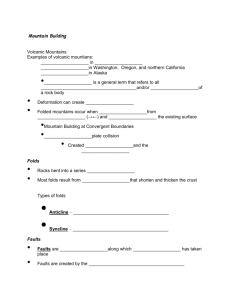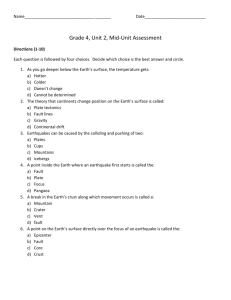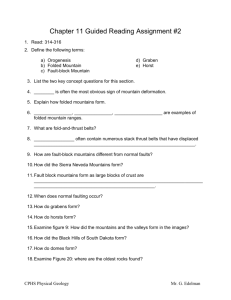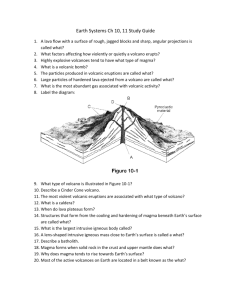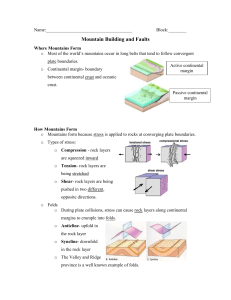Name (s) Date Types of Mountains Project Assessment: The
advertisement
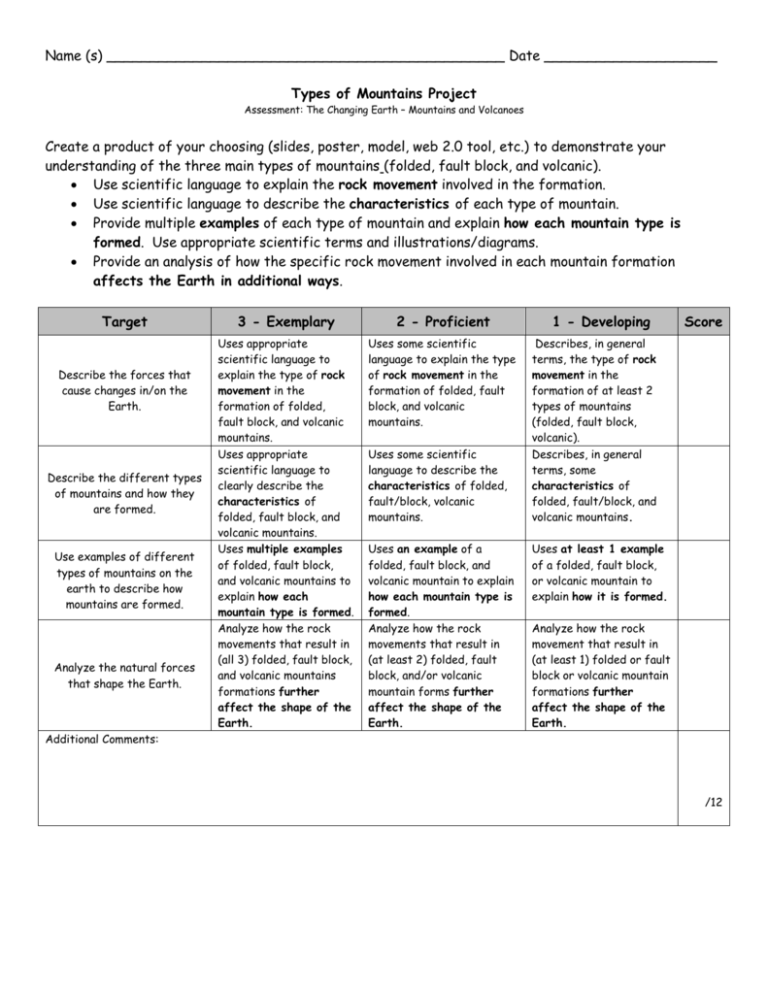
Name (s) ______________________________________________ Date ____________________ Types of Mountains Project Assessment: The Changing Earth – Mountains and Volcanoes Create a product of your choosing (slides, poster, model, web 2.0 tool, etc.) to demonstrate your understanding of the three main types of mountains (folded, fault block, and volcanic). Use scientific language to explain the rock movement involved in the formation. Use scientific language to describe the characteristics of each type of mountain. Provide multiple examples of each type of mountain and explain how each mountain type is formed. Use appropriate scientific terms and illustrations/diagrams. Provide an analysis of how the specific rock movement involved in each mountain formation affects the Earth in additional ways. Target Describe the forces that cause changes in/on the Earth. Describe the different types of mountains and how they are formed. Use examples of different types of mountains on the earth to describe how mountains are formed. Analyze the natural forces that shape the Earth. 3 - Exemplary 2 - Proficient Uses appropriate scientific language to explain the type of rock movement in the formation of folded, fault block, and volcanic mountains. Uses appropriate scientific language to clearly describe the characteristics of folded, fault block, and volcanic mountains. Uses multiple examples of folded, fault block, and volcanic mountains to explain how each mountain type is formed. Analyze how the rock movements that result in (all 3) folded, fault block, and volcanic mountains formations further affect the shape of the Earth. Uses some scientific language to explain the type of rock movement in the formation of folded, fault block, and volcanic mountains. Uses some scientific language to describe the characteristics of folded, fault/block, volcanic mountains. Uses an example of a folded, fault block, and volcanic mountain to explain how each mountain type is formed. Analyze how the rock movements that result in (at least 2) folded, fault block, and/or volcanic mountain forms further affect the shape of the Earth. 1 - Developing Score Describes, in general terms, the type of rock movement in the formation of at least 2 types of mountains (folded, fault block, volcanic). Describes, in general terms, some characteristics of folded, fault/block, and volcanic mountains. Uses at least 1 example of a folded, fault block, or volcanic mountain to explain how it is formed. Analyze how the rock movement that result in (at least 1) folded or fault block or volcanic mountain formations further affect the shape of the Earth. Additional Comments: /12
